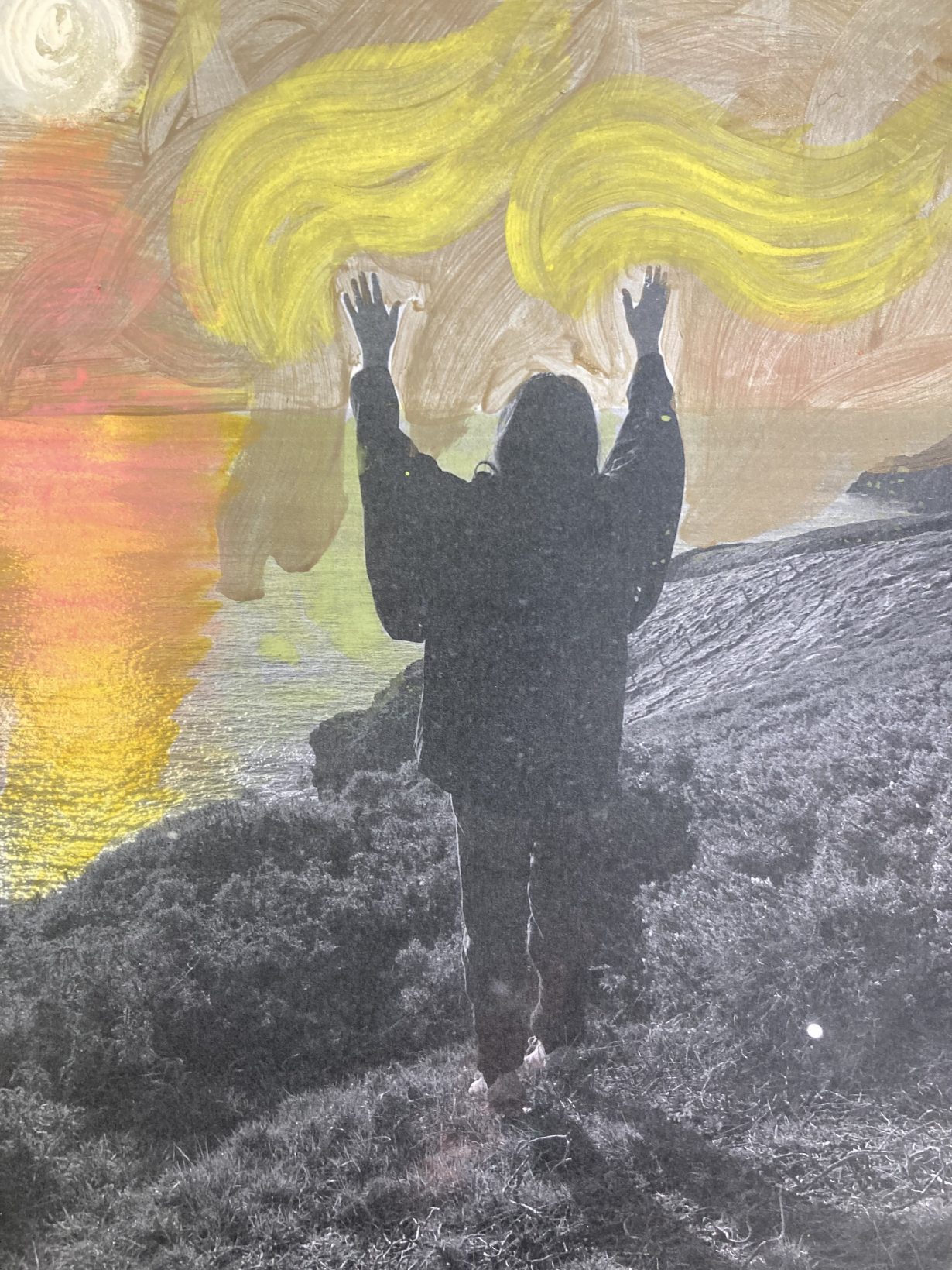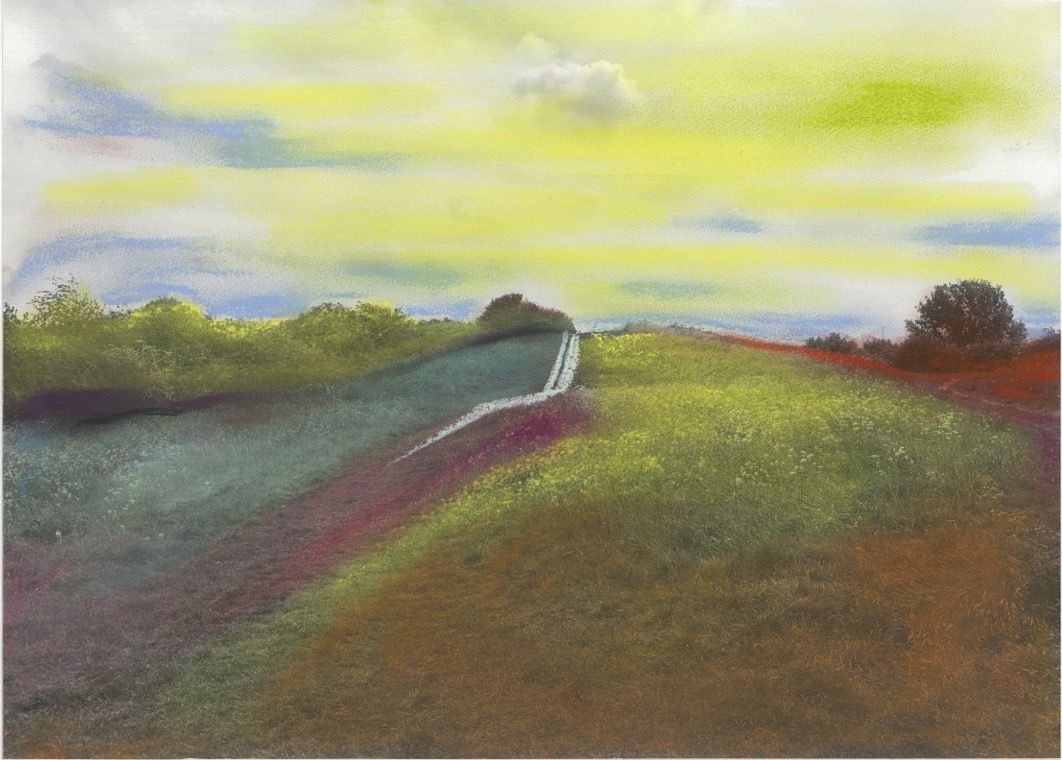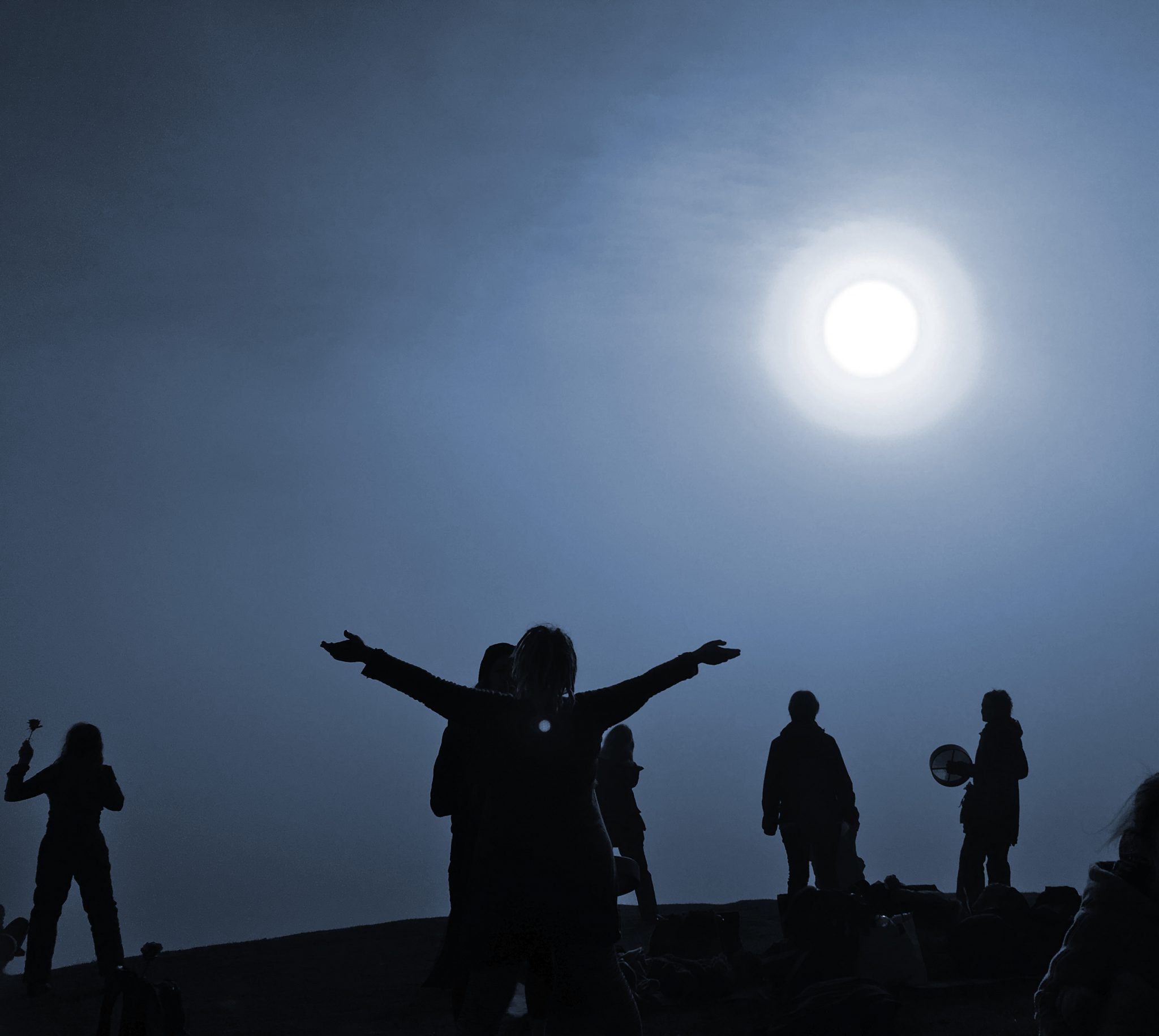The artist’s show at John Marchant Gallery, Brighton revisits the era of revolt that critiqued capitalism, favoured independence and drug experimentation
“Kill all hippies,” sang onetime punk rocker Bobby Gillespie in the eponymous Primal Scream song from 2000. What was it about those gentle flower-power types that so annoyed the Sniffin’ Glue generation? After all, punk had much in common with psychedelic culture: a desire for revolt that critiqued capitalism, favoured independence and drug experimentation – commonalities conveniently elided in Gillespie’s rant, but intriguingly revisited by Alison McKenna’s optimistic show in, fittingly enough, hippy-dippy Brighton.
McKenna uses a variety of media, including paintings and video; photography features in a sequence of works called I Am Because You Are (2024), with shots taken from various sites allied to key hippy concerns: protest, magic, nature and feminism. We see lines of women at RAF Greenham Common (where nuclear weapons were stationed during the Cold War), their backs against yards of security fencing and barbed wire as if standing inside a POW camp. Some of the photos have collaged elements, such as peace symbols done in glitter; others feature more anarchic interventions using ink or tape.

There are references in the photography to Delphyne, the mythical she-dragon (and Greek word for womb), as well as to the sacred precinct of Delphi. Staying with holy sites, there are also shots of Glastonbury Tor – associated with the Goddess movement evidently much favoured by McKenna – and Waun Mawn, a ‘lost’ stone circle in Wales. But the show is a world away from the contemporary commercialisation of the Glastonbury Festival. (One doubts McKenna would approve of the £355 entrance fee.)
A highlight here is the videowork Sun Stands Still (2016–24), featuring young people with arms akimbo, a female-only group, embracing the power of the sun during the Winter Solstice. All very Brighton, given the city’s annual Burning the Clocks celebrations on 21 December. The video is joyful and welcomingly cheering, with one caveat: similar musings on heliocentric structures, such as Stonehenge, are familiar and have been previously and extensively mined by Jeremy Deller.
There are enamel paintings too, abstractions that reference landscapes, as with White Mountain (2022), in which a thick curve of yolk-yellow sits above a white expanse (of alpine snow?) and below what might be a pink sunrise. Others feature breastlike hill forms and mute megaliths. Their simplicity of line and erotic suggestibility recall Gary Hume’s American Tan (2006–07) series of paintings referencing cheerleaders; teasingly obtuse but seductively coloured.

As with 1960s hippy culture, the images of protest here imply an intrinsic suspicion of money and consumerist excess, of men and The Man. McKenna’s admitted influences include the poet Barbara Mor and the painter Monica Sjöö, both associated with the Goddess movement. McKenna’s interest in gatherings and protest inspire her celebration of energies and struggle, ecofeminism and the divine feminine. There are also predictable allusions to neopaganism and pantheism that will underline suspicions in those tired of clichéd New Age philosophising.
McKenna’s feminist visions take a defiantly positive stance in opposition to punky nihilism. Her stubborn insistence on an idealistic view of humanity is admirable, but at odds with the stark challenges of the now. Hippies can hymn, “Here comes the sun”, and that “it’s alright”. But it isn’t. That sun is burning us up; it’s all too late. There’s no future.
Moon Shrines, Water Springs and Sacred Flares at John Marchant Gallery, Brighton, 7 June – 13 July
